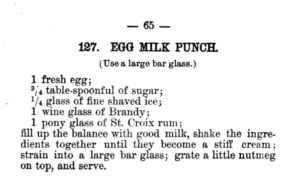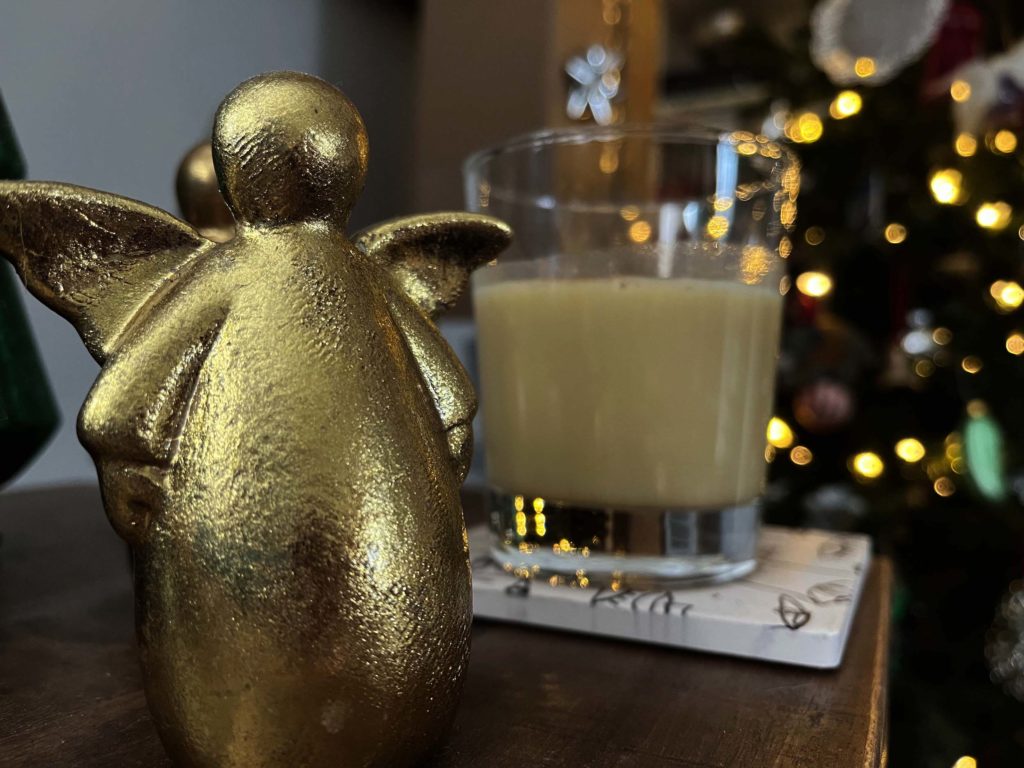Have a drink with: Hugh Henry Brackenridge
Attorney, nog enthusiast, clothing optional
Ask him about: Pork as medicine
It’s the holiday season, and that means it’s time for nog.
Where did eggnog come from? If you look into it, you get a linguistic soup of suggestions (“nog” being an old word for strong ale, or “noggin” as a drinking vessel); and there are all sorts of historical links dragged out as to its origin, from medieval “posset” concoctions, to frothy egg-flips, to aristocratic milk punches (not clarified punches, which are an entirely different thing and which Ben Franklin loved). Consensus is that there is a centuries-long human history of making eggy milk drinks and pouring booze into them, which at some point syncretized into the modern concept of eggnog.
It doesn’t really matter. What does matter is that eggnog existed early on in American history, thanks to British culinary tradition and the good availability of eggs and dairy in the young nation, and it frequently involved a fair quantity of whatever liquor suited the local taste and economy.
I say a “fair quantity.” We now turn to Judge Hugh Henry Brackenridge, a justice of the Pennsylvania Supreme Court at the turn of the 19th century, for demonstration of the fact that there is indeed such a concept as too much of a good thing.
Judges in early American history were accustomed to “ride circuit,” traveling throughout their assigned districts. Going through Washington County, Pennsylvania in 1799, Brackenridge undertook a journey that was described in an 1800 edition of the Lancaster Intelligencer under the title “The late mad circuit of Judge Brackenridge thro’ Washington County.”
According to reports, new appointee Brackenridge arrived in Washington well-dressed and ready to press the political flesh. Finding a cool reception (“no decent person of the place called to see him,” the paper notes) the embarrassed judge returned to his tavern, drank a solid ration of brandy and rode off to Canonsburg, where he hoped more people might pay attention. And they did, though perhaps not for the reasons he might have hoped:
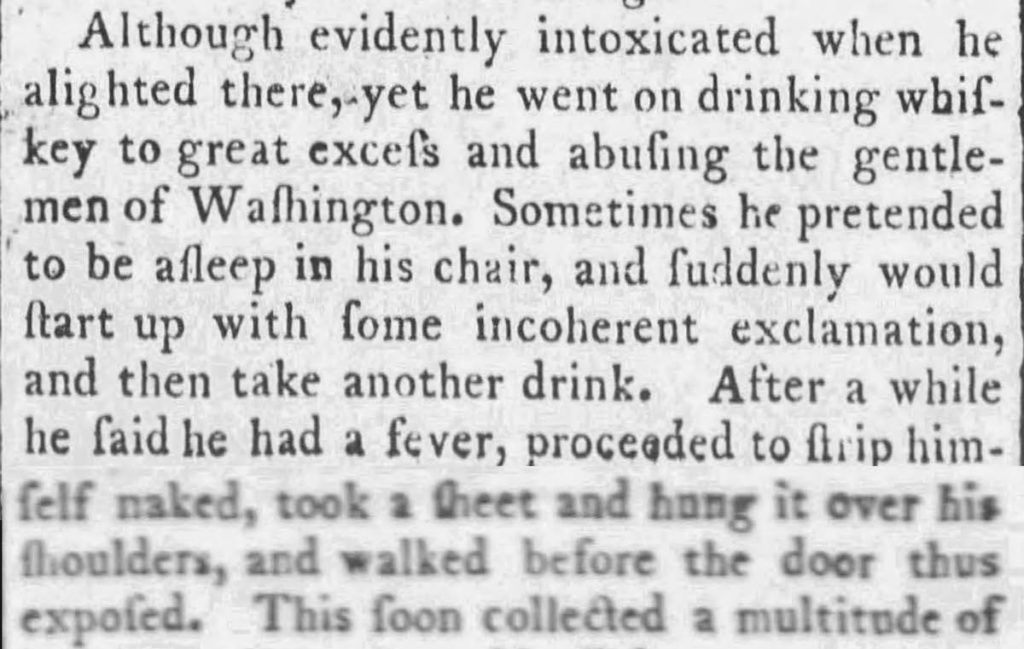
Rambling out to the stable in a bedsheet and complaining about how goddamn hot it was in here, didn’t anyone else think it was hot?, the judge enlisted a young boy to throw a few buckets of water on him:
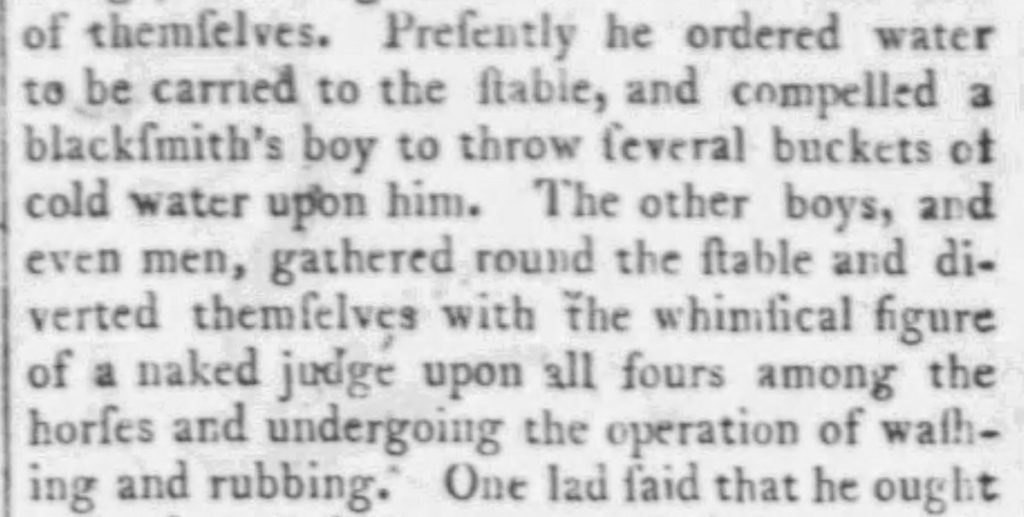
The whole town had by now heard “that the judge was either drunk, or mad, or both” and come to take a look, so a grumbling Brackenridge put his clothes back on, insisted he was totally okay to drive and “with difficulty got upon his horse” to head for Pittsburgh. On the way he fell over a log, got drunk again, turned back towards Canonsburg, temporarily forgot where his money was, and eventually ended up at a tavern, where he put on a woman’s gown and ordered a batch of eggnog, all the while swearing a blue streak.

He eventually made it to Pittsburgh, where reporters noted that “he continued drunk for several days under circumstances very aggravated and distressing.”
Merry Christmas. Nog responsibly.
Fun Facts:
Judge Brackenridge’s eggnog bender is a doozy, but the 1826 West Point Eggnog Riot is still America’s premier nog brawl.
George Washington’s eggnog recipe is often touted as a high-octane relic to drag out for the season. Problem is, it’s a fiction. Dwight Eisenhower did have a kicker, though.
Oh, and while we’re on Presidents and eggnog recipes, William Henry Harrison had one, too, and it involved cider because of course it did.
Happy holidays in New York City, 1823: Nog and Turkies for everyone!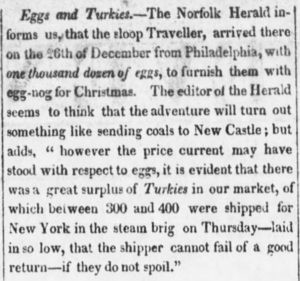
Additional Reading:
The Lancaster Intelligencer, December 13, 1800
It’s almost Christmas. Have some nog! Here’s a 19th century recipe from Harry Johnson’s New and Improved Illustrated Bartenders’ Manual.